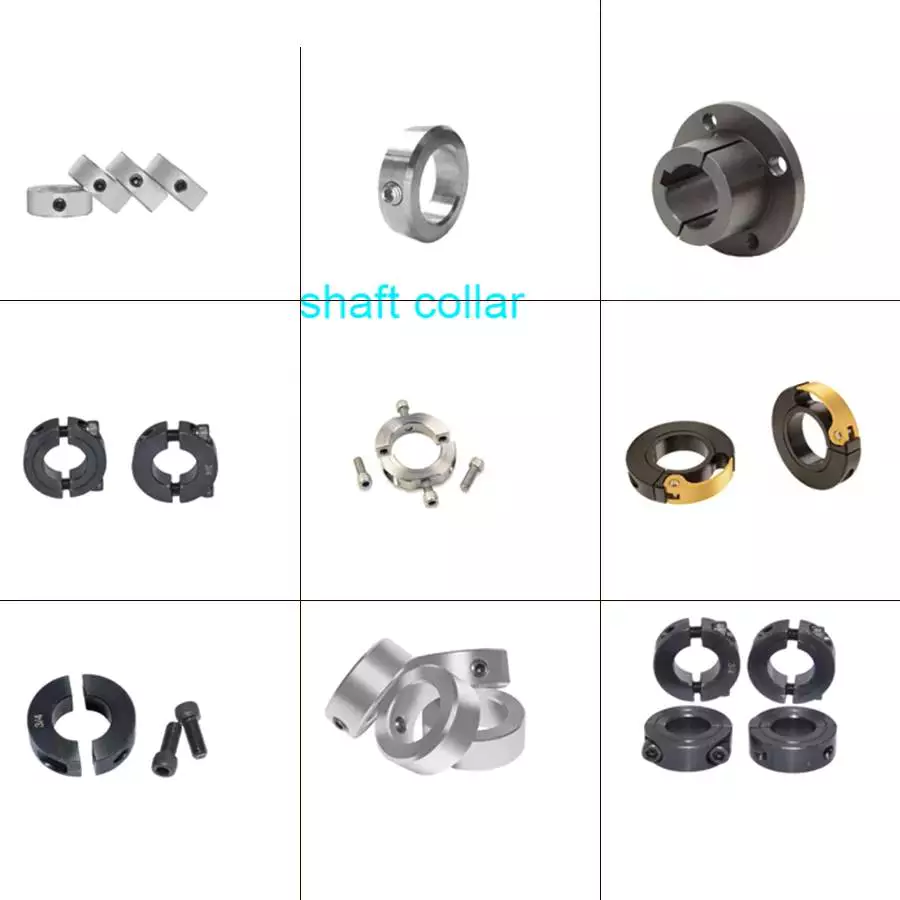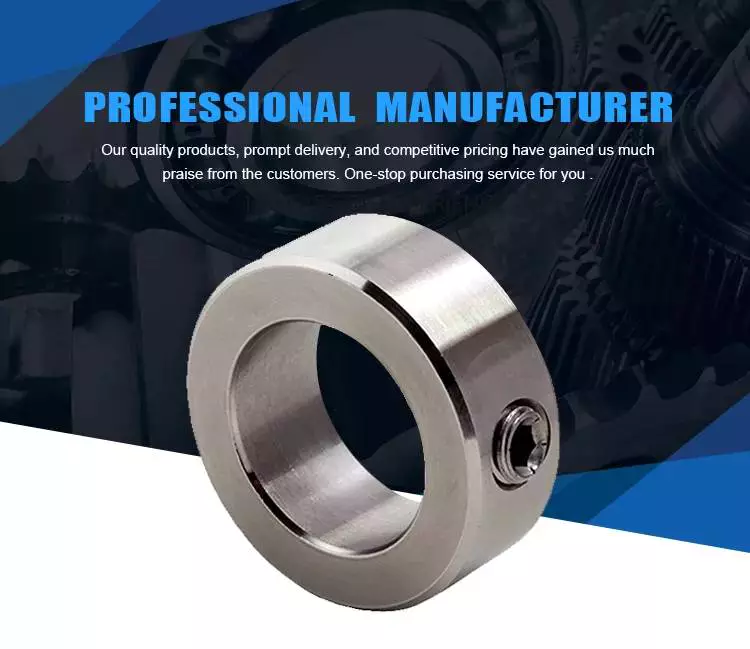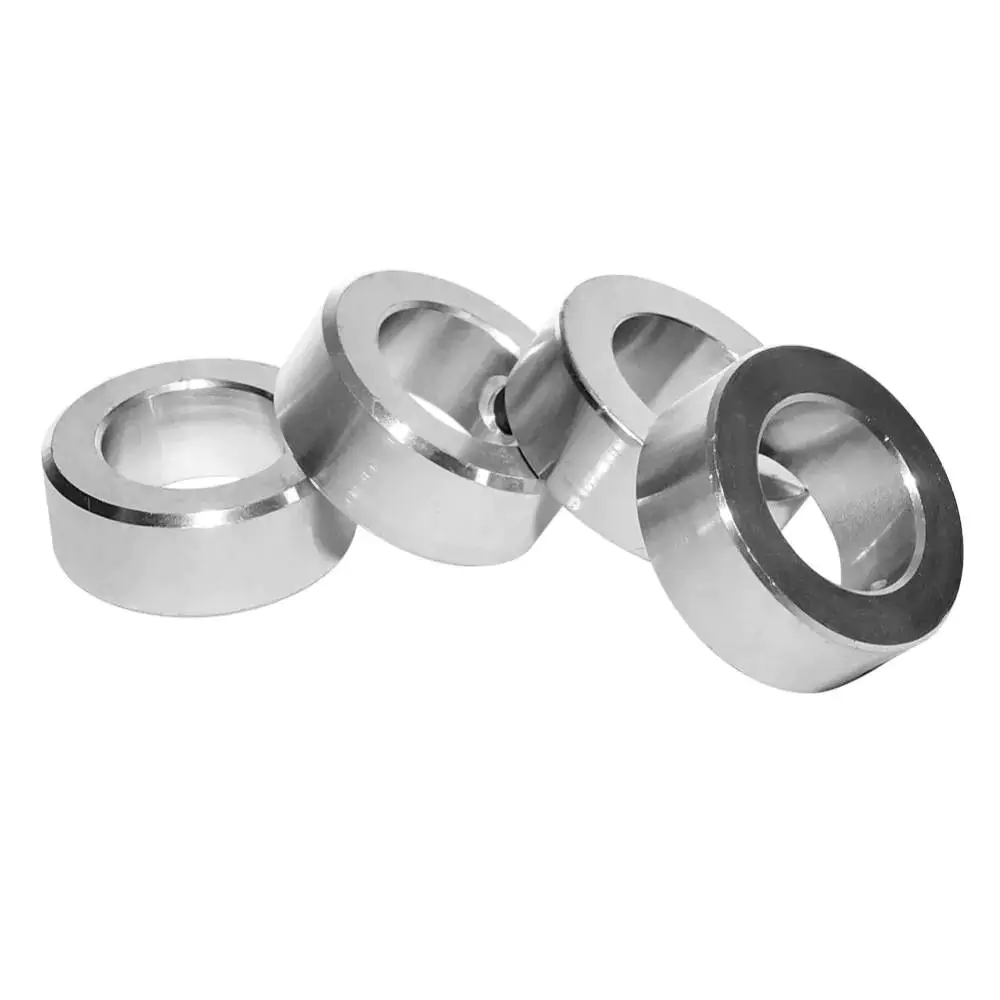
What are the steps for retrofitting machinery with shaft collars for improved performance?
Retrofitting machinery with shaft collars can be a beneficial step to improve performance, enhance functionality, or address specific issues. Here are the general steps involved in retrofitting machinery with shaft collars:
- Assessment and Planning: Start by assessing the machinery and identifying the areas where shaft collars can be installed or upgraded to improve performance. Consider factors such as misalignment, slippage, vibration, or inadequate gripping of rotating shafts. Plan the retrofitting process by determining the number of collars required, their sizes, materials, and any additional components or modifications needed.
- Measurement and Shaft Preparation: Accurate measurement of the shaft diameter is crucial to ensure proper fitting of the collars. Use calipers or other measuring tools to determine the shaft diameter at the desired installation points. Clean the shaft surface and remove any debris or contaminants that may interfere with the collar installation. If necessary, smooth out any rough surfaces or burrs on the shaft to ensure a proper fit.
- Selection and Procurement: Select the appropriate shaft collars based on the specific requirements of your machinery. Consider factors such as shaft diameter, collar style (set screw, clamp, or other), material (steel, stainless steel, aluminum, plastic), and any special features required for improved performance. Procure the necessary shaft collars from a reliable supplier or manufacturer.
- Installation: Follow the manufacturer’s instructions for installing the shaft collars. Generally, the installation involves sliding the collar onto the shaft at the desired location and securing it in place. Set screw collars require tightening the set screws against the shaft to create a tight grip, while clamp-style collars may require tightening bolts or screws to achieve a secure fit. Ensure that the collars are properly aligned and seated on the shaft, and tighten the fasteners to the recommended torque specifications.
- Testing and Adjustment: After installing the shaft collars, conduct thorough testing to ensure their proper functionality and improved performance. Check for any signs of slippage, misalignment, or excessive vibration. If necessary, make adjustments to the collar position, tightness of the fasteners, or other factors to optimize the performance. Repeat the testing and adjustment process as needed until the desired performance improvements are achieved.
- Maintenance and Monitoring: Regularly inspect the shaft collars as part of your machinery maintenance routine. Check for signs of wear, corrosion, or any issues that may affect their performance. Lubricate the collars if required, following the manufacturer’s recommendations. Continuously monitor the performance of the retrofitted machinery to ensure that the shaft collars are functioning as intended and providing the desired improvements.
It is important to note that the specific steps and considerations for retrofitting machinery with shaft collars may vary depending on the type of machinery, the complexity of the retrofit, and other factors specific to your application. Consulting the machinery manufacturer’s guidelines, seeking expert advice, or involving professional technicians can help ensure a successful retrofitting process and optimal performance improvements.

Are there specific shaft collars designed for use in high-speed applications?
Yes, there are specific shaft collars designed for use in high-speed applications. High-speed applications require shaft collars that can withstand the rotational forces and vibrations associated with high speeds while maintaining secure and reliable shaft connections. Here are some considerations and features of shaft collars designed for high-speed applications:
- Balanced Design: Shaft collars designed for high-speed applications are often engineered with a balanced design to minimize the potential for imbalance and vibration at high rotational speeds. This helps ensure smooth operation and reduces the risk of damage to the collar, shaft, or associated components.
- High-Quality Materials: High-speed shaft collars are typically made from high-quality materials that offer excellent strength, durability, and resistance to wear. Common materials used include steel, stainless steel, or other alloys known for their mechanical properties and ability to withstand high-speed conditions.
- Precision Machining: To maintain the necessary balance and minimize potential runout, high-speed shaft collars undergo precise machining processes. This ensures that the collar has consistent dimensions, smooth surfaces, and accurate alignment for optimal performance at high speeds.
- Secure Clamping Mechanism: High-speed shaft collars often incorporate advanced clamping mechanisms to provide a secure and reliable grip on the shaft. These mechanisms, such as precision-machined set screws, high-strength clamping levers, or quick-release clamping systems, help prevent slippage or movement of the collar on the shaft during high-speed operation.
- Specialized Coatings or Treatments: Some high-speed shaft collars may feature specialized coatings or treatments to enhance their performance. For example, certain collars may have coatings that reduce friction or improve wear resistance, while others may undergo heat treatments or surface hardening processes to increase their strength and durability under high-speed conditions.
- Compliance with Standards: In some industries or applications, specific standards or regulations may exist for high-speed rotating equipment. Shaft collars designed for such applications may be manufactured to comply with these standards, ensuring that they meet the necessary performance and safety requirements for high-speed operation.
When selecting shaft collars for high-speed applications, it is important to consider factors such as the required speed range, load capacity, environmental conditions, and any specific industry or application standards. Consulting with manufacturers or industry experts can provide valuable guidance in choosing the most suitable shaft collars that meet the demands of your high-speed application.

Are there tutorials on the proper installation of shaft collars?
Yes, there are tutorials available that provide guidance on the proper installation of shaft collars. These tutorials can be helpful for individuals who are unfamiliar with the installation process or want to ensure that they are installing the collars correctly. Here are some common sources where you can find tutorials on the installation of shaft collars:
- Manufacturer Websites: Many manufacturers of shaft collars provide detailed installation instructions on their websites. These instructions may include step-by-step guides, diagrams, or videos that demonstrate the proper installation techniques. Visiting the websites of specific collar manufacturers and exploring their resources section or product documentation can help you find the installation tutorials you need.
- Online Industrial Communities and Forums: Industrial communities and forums dedicated to mechanical components or equipment often have discussions or threads related to the installation of shaft collars. Participating in these communities and posting inquiries about installation techniques can help you connect with professionals or experienced users who can provide guidance or share their knowledge.
- Video Sharing Platforms: Platforms like YouTube or Vimeo host a wide range of instructional videos, including tutorials on the installation of various mechanical components. Searching for “shaft collar installation tutorial” or similar keywords on these platforms can yield helpful videos that visually demonstrate the proper installation techniques. Watching these videos can provide a clear understanding of the installation process and any specific considerations to keep in mind.
- Trade Publications and Magazines: Trade publications or magazines related to mechanical engineering, industrial equipment, or power transmission may feature articles or guides on the installation of shaft collars. These resources often provide detailed explanations, tips, and best practices for proper installation. Checking these publications or their online platforms can give you access to written tutorials or expert insights.
- Online Documentation and Manuals: Some manufacturers or suppliers provide downloadable documentation or manuals for their shaft collars. These documents may include installation instructions along with other technical information. Searching for the specific collar model or brand, followed by keywords like “installation instructions” or “user manual,” can help you find relevant documentation that covers the installation process.
When using tutorials for shaft collar installation, it is important to ensure that the information is sourced from reputable and reliable sources. Follow the provided instructions carefully, and if in doubt, consult with professionals or seek guidance from the manufacturer. Proper installation of shaft collars is crucial for their effectiveness, reliability, and the overall performance of the machinery.


editor by CX 2024-04-10